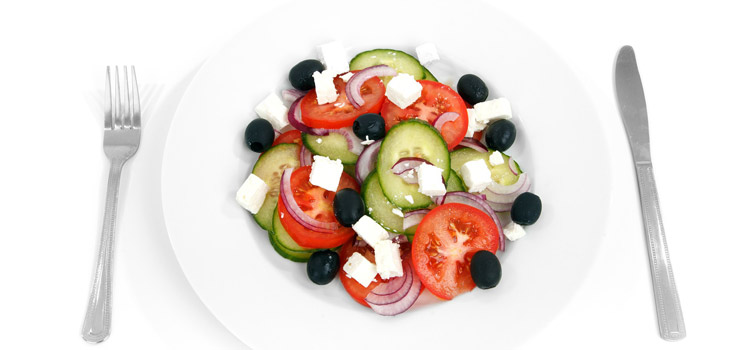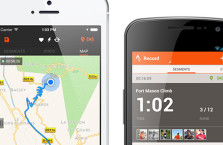South Beach Diet

Designed by a Florida-based cardiologist, Arthur Agatston, MD, who wanted to protect his patients from serious medical conditions like heart disease and diabetes, the South Beach Diet stresses the importance of controlling hunger by eating before it strikes. Dieters are urged to disrupt the typical “hunger-overeat-gain weight” cycle by cutting out carbs and focusing on lean protein, low-fat dairy, and good carbs — whole grains, vegetables, and fruit. While the first phase of the diet is strict, the third “Maintenance” phase is meant to be a lifelong eating plan that allows you to enjoy occasional treats while maintaining a healthy weight.
Weight Watchers

Though the Weight Watchers system has evolved over the years, this flexible diet’s tenants have remained the same: Eat a balanced diet, eat in moderation, and eat what you want. The diet uses a points system to track what you eat and provides motivation through local support meetings with weigh-ins (or dieters can attend “virtual meetings” online). Though the high level of flexibility and temptation can be difficult for some, Weight Watchers has had a high track record of success for more than 40 years and remains very popular today.
Mediterranean Diet

If a dinner of fish and veggies with a glass of red wine sounds like an ideal meal to you, you may have found your diet match in the Mediterranean Diet. This heart-healthy diet includes the food staples of people in countries surrounding the Mediterranean Sea, such as Greece and Italy. With an emphasis on heart-healthy fats — those containing omega-3 fatty acids — the diet is rich in seafood, nuts and legumes, fruits and vegetables, whole grains, and olive oil, as well as red wine in moderation.
The Zone Diet

Celebs like Jennifer Aniston may come to mind when you think of the Zone Diet, which maintains that changing the balance of the foods you eat (mainly, adding protein to balance the carbs at every meal or snack) will help you lose weight, reset your metabolism, and ward off chronic health conditions like heart disease and diabetes. Dieters follow a “30-30-40” breakdown to help control insulin levels and hunger, getting 30 percent of their calories from protein, 30 percent from fat, and 40 percent from carbohydrates. Devotees give the Zone Diet praise for variety and ease of use, though others warn that the rigid plan can feel restrictive and is light on certain nutrients.
Atkins Diet
No longer a diet of all-you-can-eat bacon and scrambled eggs, the New Atkins Diet Revolution — created in 2002 — is a streamlined version of the original diet, one that balances lean protein with controlled portions of fat and healthy carbs. Dieters begin with just 20 grams of carbs a day and very gradually increase the amount each week. As with many other diets, the main idea is to stop eating foods made with refined flour and sugar, but even carb-dense whole-grain foods are off-limits until you reach the maintenance phase. While proponents tout the Atkins diet’s short-term effectiveness and say it’s easier to stick to than other diets, detractors point out that you’re really not getting a well-balanced diet and may particularly be lacking calcium.
Paleo Diet
In its purest form, the Paleolithic Diet – more commonly known as the Paleo Diet or the Caveman Diet — allows only those foods that man ate when he first roamed the planet millions of years ago: Fish, lean meats, fruit, non-starchy veggies, and nuts are in; starchy veggies, dairy foods, grains, and processed foods are out. Because of its straightforward guidelines, focus on nutrient-rich produce, and emphasis on exercise, the Paleo Diet has earned a loyal following among fans who say it helps them not only lose weight but get — and stay — healthier. However, others say the long term results aren’t proven yet and say the diet is also difficult to maintain.
Volumetrics
Losing weight by eating fewer calories yet still feeling full — sound like the ideal option for you? Perhaps try Volumetrics, which proposes that foods that contain more water, such as fruits and vegetables, are healthier because they have lower energy density than sugary and fatty foods. Less a diet than an approach to eating, Volumetrics is backed by sound research and strongly promotes eating to feel full; drawbacks include an emphasis on at-home cooking.
Raw Food Diet
Advocates of the Raw Food Diet believe that cooking food and breaking down its enzymes leads to losing many of the food’s nutritional benefits. Restricting food that is cooked or heated above 116 to 118° Fahrenheit, the plan allows you to eat as much as you want, as often as you want as long as it is raw and vegetarian. Though nutritionists praise the focus on fresh produce and avoidance of processed foods, many say the diet is lacking in nutrients and is difficult to sustain.
NutriSystem
If you desire a diet where the thinking and planning is done for you, Nutrisystem may be for you. With this plan, the meals are pre-made and engineered to deliver only a certain amount of calories per day based on your age and gender. While weight loss success is certainly possible — it’s an easy plan to stick to because everything is done for you, and it’s customizable — a major drawback is the cost of the packaged meals.
Macrobiotic Diet
The Macrobiotic Diet promotes whole foods over processed foods and encourages meditation and slowing down your lifestyle along with the eating habits. Meals consist primarily of whole grains, fruits, and vegetables, so weight loss is achievable, but naysayers caution that this plan’s rigid guidelines make it difficult to maintain and can even lead to nutritional deficiencies. As with many diets, it’s important to do plenty of research before adopting a macrobiotic lifestyle, and to work with a dietician to ensure all nutritional needs are being met.
Visit Everyday Health for more diet tips













